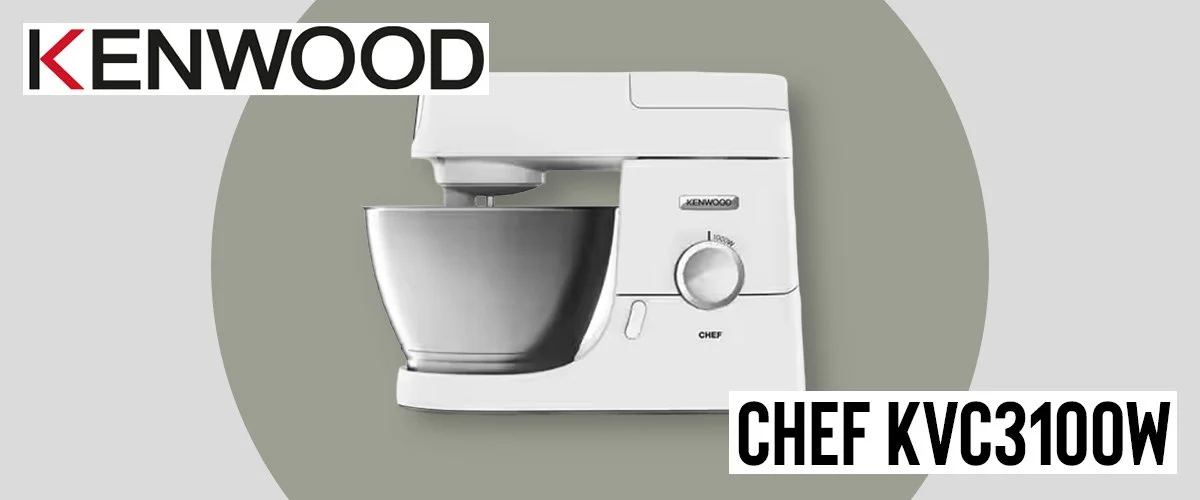What Speed Settings Should You Use for Different Recipes on the Kenwood Chef?
You should use low speeds on the Kenwood Chef for kneading dough, medium speeds for batters and creaming, and high speeds for whisking and aerating mixtures. Understanding the speed settings helps you get perfect results without overworking your recipes or making unnecessary mess.
The Kenwood Chef KVC3100W is equipped with a variable speed dial and pulse function, designed to give you precise control. In this guide, we’ll break down the best speed ranges for different recipes, with tips for getting consistent results every time.
Low Speeds (1–2) – Gentle Mixing and Kneading
Low speeds are best when working with dense or heavy mixtures. They keep everything under control and prevent flour or dry ingredients from flying out of the bowl.
Ideal for:
Kneading bread or pizza dough with the dough hook
Combining flour into wet ingredients
Folding in nuts, seeds, or chocolate chips
Mixing heavy batters like fruitcake
Medium Speeds (3–4) – Smooth Batters and Creaming
Medium speeds strike a balance between power and control, giving you smooth mixtures without overbeating. This is where you’ll do most of your everyday baking.
Ideal for:
Creaming butter (or vegan margarine) with sugar using the K-beater
Cake batters and cupcake mixtures
Cookie doughs
Pancake or waffle batters
High Speeds (5–6) – Whipping and Aerating
High speeds whip lots of air into your mixtures, making them light, fluffy, and airy. The balloon whisk is designed to shine at these settings.
Ideal for:
Whipping aquafaba into stiff peaks
Making vegan whipped cream
Beating sponge cake batters
Whipping frostings or icings
Pulse Function – Short Bursts of Power
The pulse setting gives you maximum power in short bursts, ideal for quick mixing without overworking.
Ideal for:
Folding in chunky ingredients
Breaking up clumps of flour or sugar
Giving doughs or batters a quick final mix
Tips for Best Results
Always start at the lowest speed and increase gradually.
Stop the mixer occasionally to scrape down the sides of the bowl.
Use the right attachment for the job (K-beater, whisk, or dough hook).
Avoid running the mixer at high speed for too long, as it can overmix or overheat lighter mixtures.
Conclusion
The Kenwood Chef KVC3100W makes it simple to get the perfect texture when you know which speeds to use. Low speeds for kneading, medium for mixing, and high for whipping will cover most recipes. By using the right speed for the right job, you’ll avoid common mistakes and enjoy better results in your baking and cooking.
FUTHER READING
How do you set up the Kenwood Chef KVC3100W for the first time?
What comes in the box with the Kenwood Chef KVC3100W?
greenandgreatfood.com/plant-based-blog/kenwood-chef-kvc3100w-setup-what-comes-in-the-box
How do you clean and maintain the Kenwood Chef KVC3100W properly?
greenandgreatfood.com/plant-based-blog/kenwood-chef-kvc3100w-cleaning-guide
What speed settings should you use for different recipes on the Kenwood Chef?
greenandgreatfood.com/plant-based-blog/speed-settings-on-kenwood-chef-kvc3100w
Is the Kenwood Chef KVC3100W easy for beginners to use?
greenandgreatfood.com/plant-based-blog/is-the-kenwood-chef-kvc3100w-good-for-beginners

